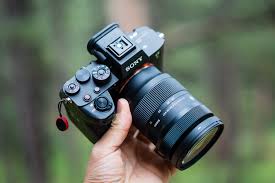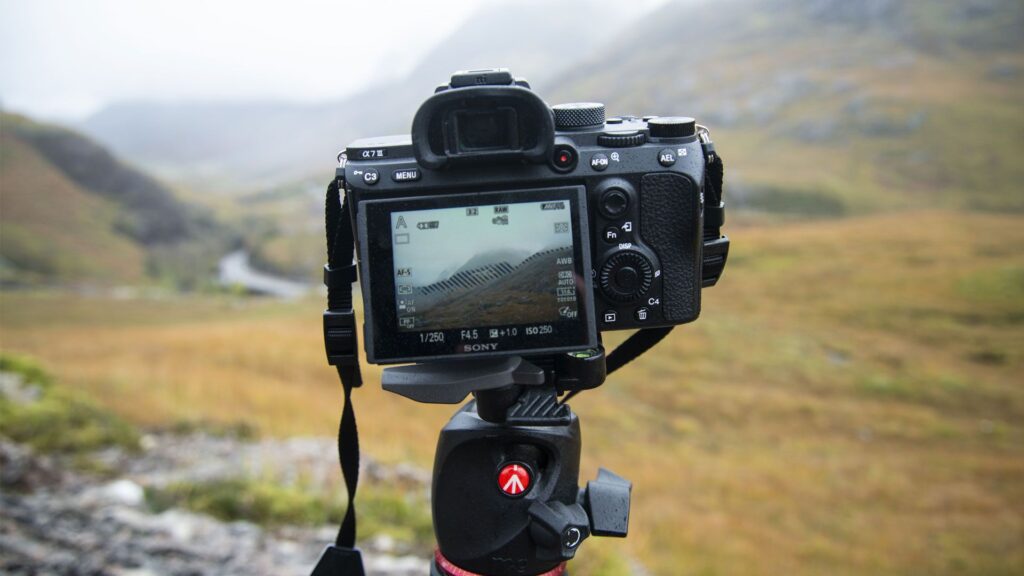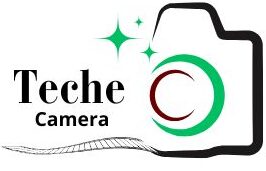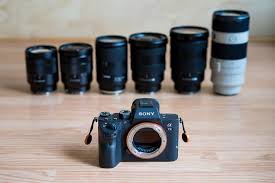If you’re searching for the best lens forboth long and short photography sony a7iii, you’ve come to the right place. This expert-backed 2025 guide provides a deep dive into the most versatile zooms, prime combos, budget options, and actionable tips to help you shoot everything from sweeping landscapes to tight portraits with confidence.
What “Long and Short Photography” Means for Sony A7III
When we talk about short focal lengths (24–50 mm), we’re referring to wide-angle and normal perspectives ideal for landscapes, street, and environmental captures. Long focal lengths (70 mm and above) are geared toward portraits, wildlife, and selective detail. Hybrid lenses or smart lens combos give you flexibility for dynamic situations like travel or events where switching lenses isn’t practical.
In practice, photographers need to pivot between ultrawide scenes and close-in details without missing moments. Effective use of both ends of the focal range requires gear that focuses fast, handles shake, and delivers sharp image quality across the frame, making the right lens choice critical.
Key Features to Evaluate in Lenses for the Sony A7III
Autofocus Speed & Eye-AF Compatibility
Sony’s Fast Hybrid AF and Eye-AF support is vital, especially for moving subjects or video work. Prioritize lenses with stepping or linear motors to ensure precise focus locking on A7III bodies.
Stabilization: OSS or IBIS
Despite A7III’s IBIS system, lenses with Optical SteadyShot (OSS) like the 24-105 mm amplify stabilization power, making slow-shutter shooting more reliable, especially at longer focal lengths (e.g., 1/6 sec handheld exposures).
Weight, Size, and Handling
Go for lenses between ~575–700 g for comfort during extended handheld use. Bulky lenses make travel and street shooting tiring fast.
Aperture & Low-Light Capability
Fast apertures (f/1.8–f/2.8) support low-light shooting and creative focus control, while zooms with variable apertures remain more affordable and lighter.
Durability: Build Quality & Weather Resistance
Look for models with dust/moisture sealing and fluorine coatings on front elements, essential for outdoor reliability during unpredictable weather.
Best All‑in‑One Zoom Lenses for Long + Short Photography
Sony FE 24‑105 mm f/4 G OSS
This lens offers a comfortable balance of focal range, weight, and image quality. At ~663 g, it’s compact yet powerful. Featuring 17 elements including ED glass and Nano AR coatings, it minimizes chromatic aberration and flare. It also supports OSS that harmonizes with A7III’s IBIS for up to ~1/6 second handheld exposures. Build is rugged and weather-resistant, with a metal mount and fluorine-coated front. Sharpness is excellent at telephoto and good-wide, though corner fringing at 24 mm is visible in RAW mode (corrected in JPG). Ideal use: landscapes, travel, street, events.

Tamron 28‑200 mm f/2.8‑5.6 Di III RXD
A superzoom marvel: bright f/2.8 aperture at 28 mm gracefully steps down to f/5.6 at 200 mm, making it unique among all-in-one zooms. Weighing just 575 g, it features advanced optical design (GM, XLD, LD elements, BBAR coating), dust/moisture sealing, and a fluorine-coated front. The RXD motor delivers silent and responsive autofocus. It supports Eye-AF and Fast Hybrid modes.
Close-attention: minimal focus failures (~97.8% repeatable at 200 mm) but some corner softness and chromatic aberration at the wide end. Still, image quality rivals many conventional zooms.
Best for: budget travellers, walkaround versatility, hybrid shooters.
Smart Lens Combos: Enhanced Prime Output
Sony 20 mm f/1.8 G + Sony 85 mm f/1.8
Ultrawide clarity paired with portrait compression and low-light speed. Both lenses support Eye-AF, and the bright f/1.8 aperture ensures subject separation even in moody light. Ideal for weddings, events, and environmental portraits.
Sigma 24 mm f/1.4 Art + Sony 70‑200 mm f/4 G OSS
This combo covers street through telephoto with unmatched sharpness and minimal focus breathing issues. The Sigma delivers spectacular low-light landscapes, while the Sony 70‑200 offers stabilized telephoto reach with OSS.
These pairings allow lens-specific strengths, sharpness, artistic bokeh, low-light performance that hybrid zooms simply can’t match.
Prime Lenses for Superior Long + Short Photo Quality
Top Wide/Normal Primes (Short):
- Sony 35 mm f/1.4 GM: Exceptional corner-to-corner resolution and beautiful bokeh separation, perfect for environmental portraits and editorial work.
- Sigma 24 mm f/1.4 Art: An astrophotographer’s dream, ultra-sharp, fast, and ideal for nightscape or architectural shooting.
Top Portrait/Tele Primes (Long):
- Sony 85 mm f/1.4 GM: Legendary for portrait clarity and background blur, with pro-level eye-tracking autofocus.
- Sony 135 mm f/1.8 GM: Lightweight tele option with razor-sharp performance, popular for field shoots and environmental portraits.
These primes satisfy pixel-peepers and pros looking for ultimate quality, though they require lens changes to switch between short and long focal ranges.
Budget-Friendly Lens Alternatives
- Tamron 28‑75 mm f/2.8 G2: Sharp zoom with constant f/2.8 and Eye-AF support, weighing only ~550 g—excellent choice for social media creators or travel enthusiasts on a budget.
- Sigma 100‑400 mm f/5‑6.3 DG DN OS: Extends tele reach affordably with OSS and good reach for wildlife or sports shooting.
- Rokinon/Samyang AF 14 mm f/2.8: Manual ultrawide option ideal for astrophotography, landscapes, or vlog backgrounds.
These options bridge performance and affordability seamlessly for upcoming photographers who require quality on a budget. Many deliver Eye‑AF support and solid autofocus trustworthiness.
Best Lenses for Everyday, Travel & Street Shooting
- Sony 24‑70 mm f/2.8 GM II: Fast aperture, minimal focus breathing, and top-tier optics, highly recommended for professional shooters demanding top autonomy. However, some users report dust ingress in extreme conditions.
- Tamron 28‑75 mm f/2.8 G2: Lightweight and affordable with Eye‑AF support, ideal for casual travel and street work.
- Sony 24‑105 mm f/4 G OSS: Robust and stable all-rounder, especially valuable when you need OSS and respectable image quality without swap-outs.

Best Hybrid Lens for A7III (2025 Overall Pick)
| Lens | Focal Range | Aperture | Weight | OSS | Price | Verdict |
| Sony 24‑105 mm f/4 G OSS | 24–105 mm | f/4 fixed | 663 g | Yes | ~$1,300 | Most versatile all‑round lens |
| Tamron 28‑200 mm f/2.8‑5.6 | 28–200 mm | f/2.8–5.6 | 575 g | No | ~$1,000 | Greatest zoom range value |
| Sony 24‑70 mm f/2.8 GM II | 24–70 mm | f/2.8 fixed | 695 g | No | ~$2,199 | Fastest aperture & build |
Winner: Sony 24‑105 mm f/4 G OSS—delivering consistent sharpness, wide-to-tele flexibility, lightweight build, OSS, and excellent weather sealing.
Bonus: Best Lenses for Mixed Photo + Video Use
- Sony 24‑70 mm f/2.8 GM II: Focus breathing is minimized in the Mark II, autofocus is smooth and silent—perfect for event or narrative video.
- Sony 24‑105 mm f/4 G OSS: Ideal for handheld video thanks to in-lens stabilization and reliable autofocus.
- Tamron 20‑40 mm f/2.8: Ultra-compact and fast—great for vlogging and walk-around b-roll capture.
All options provide silent autofocus transitions, low breathing, and stabilization characteristics essential for clean footage.
How to Choose the Right Lens for Your Workflow
Choosing the right lens for your Sony A7III depends on what kind of photos you like to take. If you want to take both wide shots (like landscapes or group photos) and zoomed-in shots (like wildlife or sports), you’ll need a lens that can do both. A zoom lens with a wide range, like 24-105mm or 28-200mm—is a good pick.
If you often take pictures in low light, like indoors or at night, go for a lens with a wide aperture (like f/1.8 or f/2.8). This helps more light enter the camera so your photos look brighter. If you shoot outdoors a lot, pick a lens that can handle weather like rain or dust.
Also, think about the weight. Some long lenses can be heavy. If you move around a lot or travel, a lighter lens will be easier to carry. If you take photos of moving things like kids, pets, or cars, choose a lens with fast autofocus so you don’t miss the moment.
Finally, check your budget. Sony G Master lenses are high quality but cost more. You can also find great lenses from brands like Tamron and Sigma, they work well and are more affordable.
Frequently Asked Questions (FAQs)
Q1: Can a single lens handle both wide-angle and telephoto needs on the A7III?
Yes, lenses like the Sony 24‑105 mm f/4 G OSS or Tamron 28‑200 mm f/2.8‑5.6 deliver competent coverage across both focal-length extremes.
Q2: What’s the best budget hybrid lens combo?
A pairing of Tamron 28‑75 mm f/2.8 G2 plus Sigma 100‑400 mm f/5‑6.3 OS offers wide-through-tele support for under $1,500.
Q3: Do third‑party lenses support Eye‑AF on A7III?
Yes. Tamron, Sigma, and Rokinon lenses for Sony E‑mount support Eye‑AF and offer autofocus that closely approaches native Sony performance.
Q4: Are weather-sealed lenses necessary for hybrid shooting?
Definitely recommended, especially for travel and outdoor use. Sony G-series and Tamron’s Di III lenses offer robust sealing and fluorine-coated elements.
Q5: Which lens is best for mixed photo + video shooting?
Sony 24‑70 mm f/2.8 GM II and Sony 24‑105 mm f/4 G OSS stand out—great autofocus, minimal breathing, and excellent coverage. Tamron 20‑40 mm f/2.8 offers a lightweight alternative for vloggers.
Final Takeaway
For the best lens forboth long and short photography sony a7iii, Sony 24‑105 mm f/4 G OSS is your most reliable all‑rounder. If you’re looking for greater aperture or budget savings, consider Tamron 28‑200 mm f/2.8‑5.6 or a smart prime pairing like Sony 20 mm + 85 mm or Sigma 24 mm + Sony 70‑200 mm.
Choose gear that suits your shooting needs, exceptional results await with the right balance of sharpness, autofocus, and focal-range flexibility. Let me know if you’d like full sample images, optimized purchase links, or comparisons with your existing lenses!

